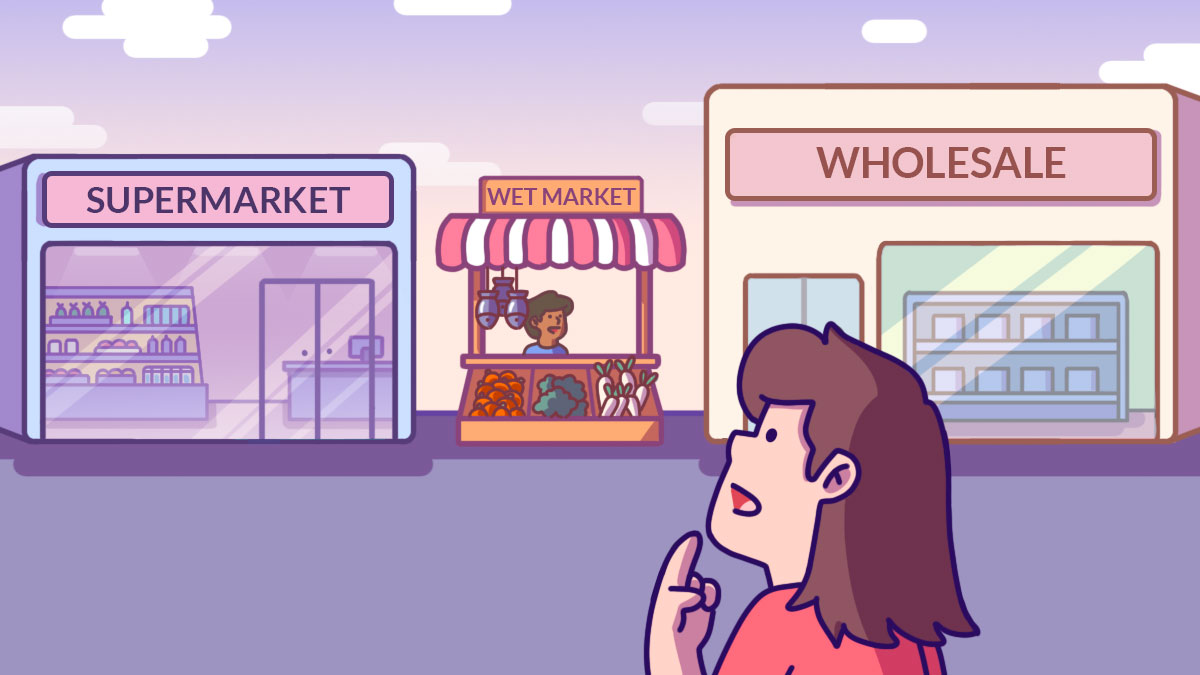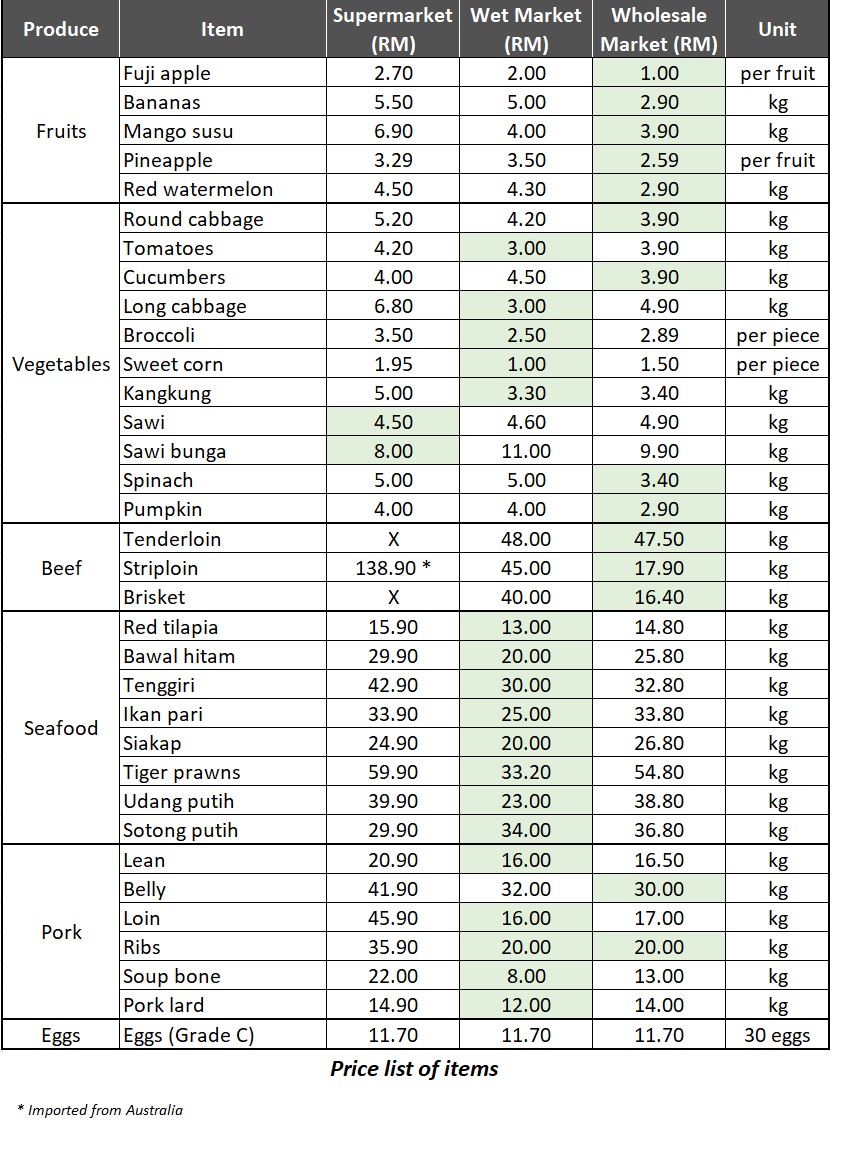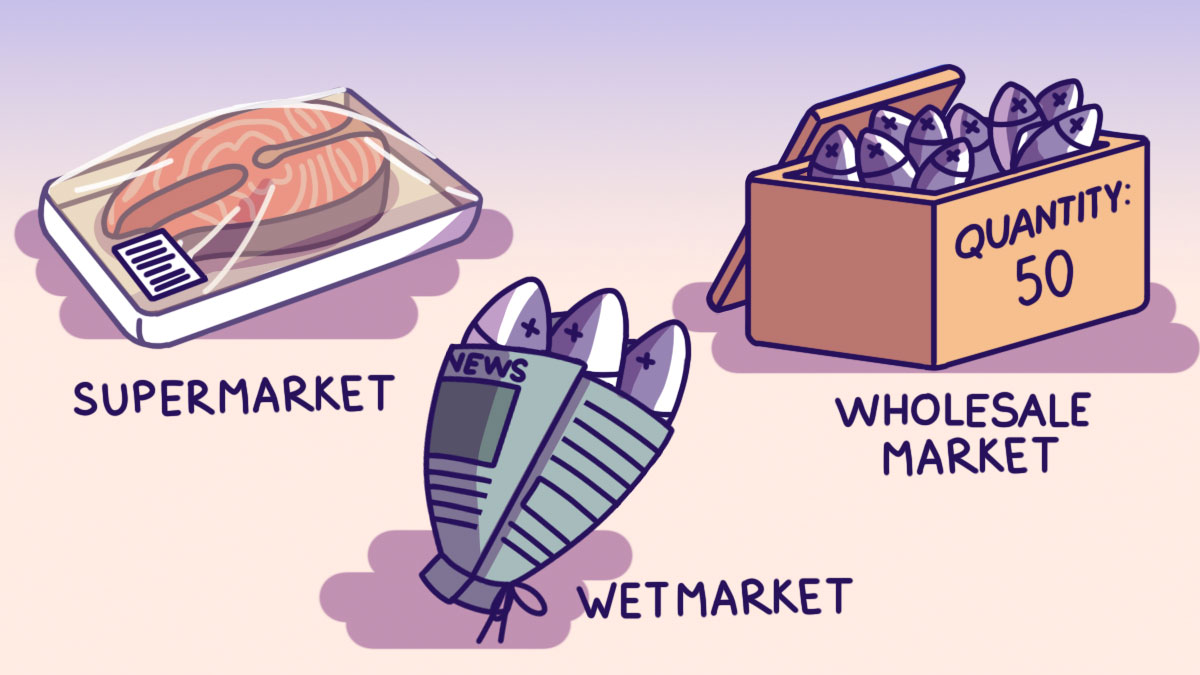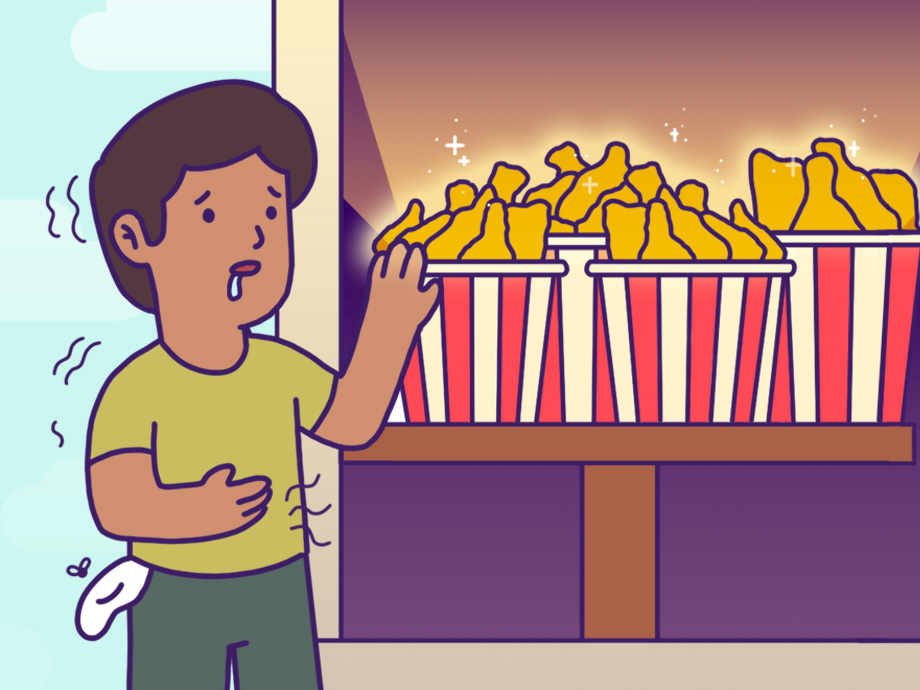Budgeting | Financial Planning | Personal Finance | Article
Are Things Really Cheaper At The Wet Market? I Went Shopping at a Wet Market, a Supermarket and a Wholesale Market to Find Out
by Ooi May Sim | 12 May 2022 | 5 mins read

One of the memories from my childhood is following my grandmother to the wet market in Penang to buy our weekly provisions when I was young because it was “cheaper than the supermarket”. I hated those trips because the place was always wet and smelly. Plus, those shopping excursions seemed to drag on forever because my Ahmah knew everyone and would stop and chat while I stood idling beside her.
Managing a household of my own now, it has been a while since I’ve set foot in a wet market because I buy all my groceries from a supermarket, where I shop in a air-conditioned comfort, pushing my trolley along the different aisles.
But every time I whip out my supermarket loyalty card to chalk up points at the checkout counter, I do wonder if I’m making a financially prudent choice to prioritise comfort over potential savings and whether it is true that I am actually spending more at a supermarket. So I decided to make it my mission to answer this question once and for all, and even go the extra mile to include wholesale centres, which are said to provide affordable options, and see where I could get the best bang for my buck.
Setting the parameters
To fulfil my mission to uncover which venue houses the cheapest groceries, I planned a trip to Aeon (supermarket), Pudu (wet market) and NSK (wholesale market).
At each destination, I chose a selection of popular fruits, vegetables, seafood and cuts of meat. And to ensure everyone is on a level playing field, I tried to choose items that were of the same size and origin, as these factors affect the price of things.
The findings of my price hunt

As you can see from the table, there is no clear winner. Some items were cheaper at the wet market, while others were cheaper at the wholesale market. The supermarket even offered the best price for some produce.
Generally, fruits and beef were cheaper at the wholesale market, while seafood, pork and vegetables were less expensive at the wet market. Grace C eggs were priced the same at all three locations. But overall, the wet market offered the best prices (I guess grandma had a point after all!).
Do note that these were the prices listed on the day of my visit — prices fluctuate according to the different seasons and promotion periods. Prices also differ from location to location. For example, the price of a kilogram of Siakap at the Bangsar wet market is RM24, compared to at the Pudu wet market, where the same item goes for RM20.

There are also other factors to consider:
- Origin and size: At the wet and wholesale market, the origin and size of the products were not always listed. So, the comparisons might not be entirely accurate. For example, produce from Australia generally costs more than locally-grown produce as suppliers save on import duties and transport fees.
- Quality: Although the produce generally looked the same (can you honestly tell the difference between one bunch of sawi from another?), they can differ in quality. Produce with higher grades are generally more expensive than lower grade ones.
Many items, especially the vegetables, were listed as premium grade in the supermarket; none of the items at the other two markets were labelled as “premium”. - Bulk purchases: The prices at the wet and wholesale market could be cheaper if you buy the items in bulk.
Related
The wet market experience
For me, my trip to the supermarket and wholesale market took place without any glitches, however, my wet market experience did pose some challenges.
As I headed towards Pudu market in my car, the roads leading there were congested and lined with vendors selling their wares. Parking was also an issue and after spending an hour looking for a spot, I decided to call it a day and went home. The next day, I went there via motorcycle.
Upon arrival, the first thing that greets you is the lively atmosphere, smell and noise. Sellers will be calling out to you from every direction with their best prices…and food advice. When I passed the pork seller, he tried to sell me some pork trotters along with a recipe on how to cook it.
And as everyone says you can haggle on prices, I decided to test this out. Trying my luck with a head of cabbage, I asked the seller what was the best price he could give me for it. He gave me a 30cent discount on my 1.5kg cabbage (from RM6.30 to RM6). This means, the price dropped from RM4.20 per kg to RM4 per kg. He also didn’t charge me for the two small tomatoes I bought (I only needed two) and just tossed them into the bag with my cabbage.
Related
My final verdict
While price is a significant determinant in our purchasing decision, there are often other things to consider as well. Take convenience as an example.
Wet markets are inconvenient to shop at because they only offer fresh goods. Hence, I had to make another trip to the supermarket to buy household items such as toilet paper and laundry detergent. This requires additional time and petrol.
Plus, wet markets have limited opening hours. For instance, Pudu market is open from 6am to 1pm; supermarkets generally open for 12 hours (from 10am to 10pm), and NSK wholesale market is open round the clock, 24-hours a day.
However, if variety of food products is what you are after, wet markets and wholesale markets have a lot to offer. You can find anything and everything there, from different types of ulam (herbs) to eel and ox tongue and head. (You definitely won’t find that in a supermarket!)
All in, there are pros and cons to each market, aside from price. So, adapt your grocery run according to your needs.


















